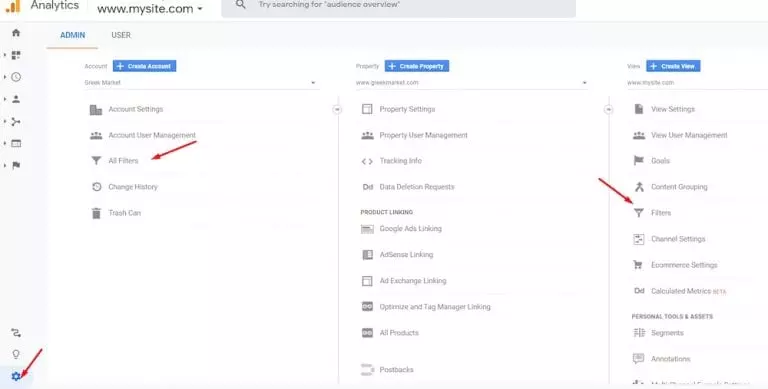Would you like to know what are the options for filtering data in Google Analytics? In this blog post, we are going to inform you just about that.
In the world of data analysis, accurate and reliable insights are essential for informed decision-making.
Google Analytics, a powerful web analytics tool, provides various features to help you filter and refine your data.
This blog post will inform you about what are the options for filtering data in Google Analytics, empowering you to optimize your data analysis and reporting for better outcomes.
Understanding Data Filtering in Google Analytics
Data filtering is the process of refining and segmenting your data to focus on specific subsets that are relevant to your analysis.
Google Analytics offers several types of filters to help you customize and extract meaningful insights from your data.
Types of data filters
Predefined filters
Predefined filters in Google Analytics are readily available options that can be applied to your data.
They serve specific purposes, such as excluding internal traffic, removing referral spam, or filtering specific subdomains.
Custom filters
Custom filters provide more flexibility and control over your data.
They allow you to define your own filter parameters based on specific conditions, dimensions, or metrics.
Advanced filters
For more complex data segmentation, advanced filters offer advanced functionalities.
They enable you to combine multiple conditions, use regular expressions (regex), or exclude specific user segments.
Read More: Google’s ‘Helpful Content Update’ to Promote Hidden Gems and Demote Unhelpful Content
Implementing Basic Data Filters
Understanding view filters
View filters are applied at the view level in Google Analytics.
They help you exclude or include specific data based on defined criteria, ensuring that the data you analyze is accurate and relevant.
A step-by-step guide to applying basic data filters
Excluding internal IP addresses
By setting up a filter to exclude internal IP addresses, you can eliminate data generated by your organization’s employees or devices, ensuring a more accurate representation of user behavior.
Filtering out referral spam
Referral spam can skew your data and misrepresent the traffic sources.
Learn how to set up filters to exclude spammy referrals and focus on genuine traffic sources.
Including only specific subdomains
If you have multiple subdomains and want to analyze data for a specific subdomain, applying a filter can help you isolate the data related to that subdomain.
Read More: How To Use Search Console Bulk Data Export?
Advanced-Data Filtering Techniques
Regular Expressions (Regex) in Google Analytics
Regular expressions (regex) are powerful patterns used for matching and manipulating text.
In Google Analytics, regex can be used to create advanced filters that match specific URL patterns or extract query parameters.
Advanced custom filters
Take your data filtering to the next level with advanced custom filters.
Learn how to set up filters with multiple conditions, combine filters for complex segmentation, or exclude specific user segments based on various criteria.
Read More: Which Three Tags Does Google Analytics Require for Accurate Campaign Tracking?
Best Practices for Data Filtering
Avoiding common pitfalls
Understand common mistakes that can lead to inaccurate or incomplete data filtering, such as misconfigured filters or applying filters retroactively.
Follow best practices to ensure data accuracy.
Testing and validation
Before applying filters to critical data, it’s crucial to test and validate them.
Learn how to validate filters and monitor their performance to ensure they function as intended.
Read More: The Default Session Timeout Duration in Google Analytics is How Many Minutes?
Monitoring and Adjusting Filters
Regular review of filter performance
Filters may require periodic monitoring to ensure they continue to function effectively.
Regularly review filter performance and make adjustments as necessary to maintain accurate data.
Considerations for filter order
The order of filters can impact the accuracy and integrity of your data.
Understand the considerations for filter order and determine the appropriate sequence for multiple filters to avoid conflicts or unintended data exclusions.
Conclusion
By harnessing the power of data filtering in Google Analytics, you can unlock meaningful insights and make informed decisions.
This blog post has provided you with a comprehensive understanding of What are the Options for Filtering Data in Google Analytics, from basic to advanced techniques.
Implementing proper data filtering practices will enhance the quality of your Google Analytics data and pave the way for more accurate reporting and analysis.
Read More: Which Tags are Standard Google Analytics Campaign Parameters?



